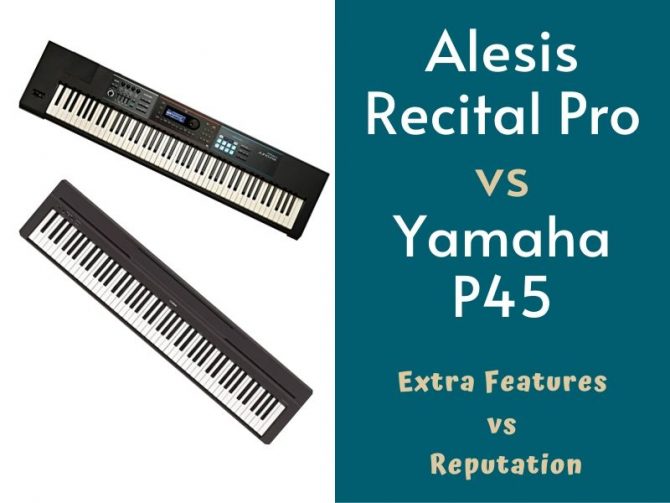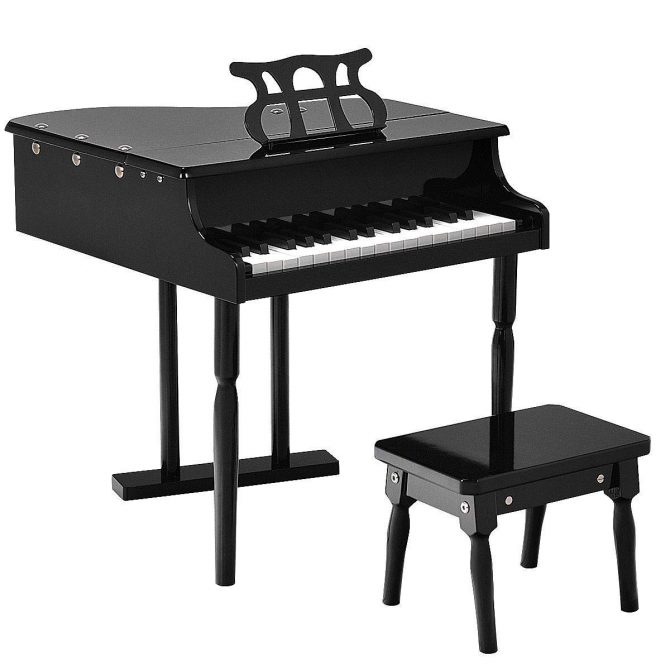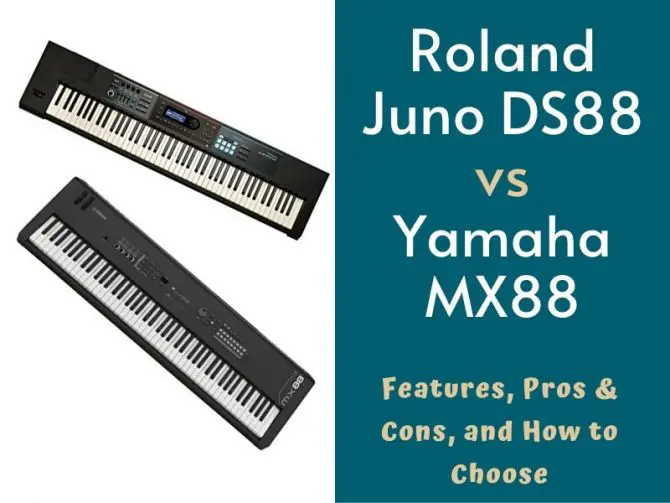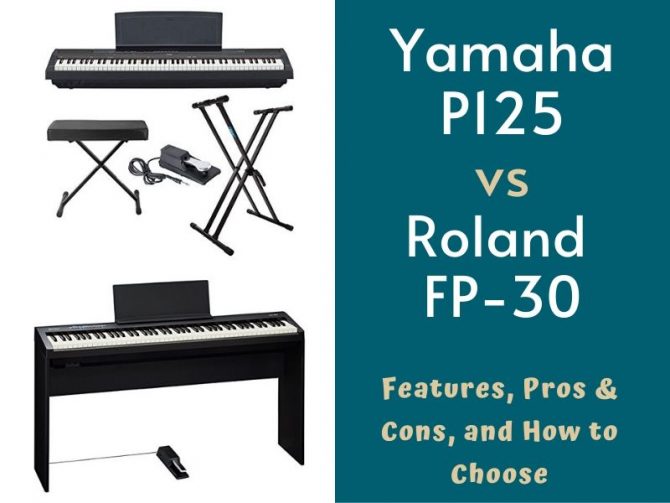
If you’re interested in playing the piano, or you’ve always wanted your child to learn it, knowing the fundamentals of beginner keyboards will get you off to a great start
One of the factors to consider is the number of keys on the keyboard. How many keys does a keyboard have? If you have limited musical knowledge, you may think that all keyboards have the same number of keys. Not true! Well then, how many keys should a piano have? Do keyboards and pianos have the same number of keys? Are they different? How many keys does a piano have? We’ll walk you through the different keyboard sizes as well as which one is best for you.
Table of contents
- How Many Keys on a Piano? How Many Keys in a Keyboard? How Many Keys Do the Most Popular Keyboards Have? How Many Keys Should a Piano Have? Are there limits?
- Why Do Some Keyboards Have 44, 61, 76, or 88 Keys? In Other Words: Why Don’t all Keyboards Have the Same Number of Keys?
- What is the Minimum Number of Keys that a Beginner Keyboard Should Have?
- How Are the Keys on a Keyboard Structured? In Other Words, How Do They Work?
- What Are the Names/Notes of the Keys on a Keyboard?
- How Many Keys Are There On A Piano Keyboard?
- Wrapping Up
How Many Keys on a Piano? How Many Keys in a Keyboard? How Many Keys Do the Most Popular Keyboards Have? How Many Keys Should a Piano Have? Are there limits?
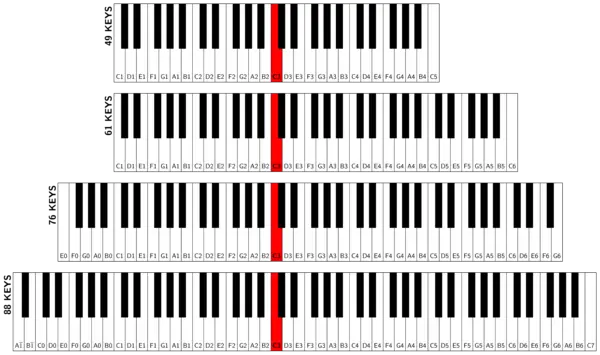
How many keys should a piano have?
A standard piano needs enough keys to cover that range of notes that spans the typical comfortable and discernable range of hearing for humans. A standard acoustic piano covers 7.25 octaves. Humans can hear outside that range, however they have trouble distinguishing the individual notes from one another. If there were many additional lower notes, humans would hear rumbling rather than the notes themselves. The situation is similar at the higher end of the range. If there were many extra keys that played high notes, the sounds would be experienced as unpleasant dissonance.
How many keys does a piano have?
A piano has 88 keys. This was established as a standard by acoustic piano manufacturers in in the 1890’s. This is the number of keys needed to cover the 7.25 octave range. Composers write music so that the notes fall in this range.
How Many Keys in a Keyboard
Standard keyboards have 88 keys. However, there are small pianos with fewer keys, suitable for those who just want to learn the basics of piano-playing. They are also ideal for those who have difficulty in learning on a full keyboard. Other common sizes include the following:
- 44-key keyboard (for children)
- 61-key keyboard
- 76-key keyboard
- 88-key keyboard (standard sized or full sized)
Why Do Some Keyboards Have 44, 61, 76, or 88 Keys? In Other Words: Why Don’t all Keyboards Have the Same Number of Keys?
Keyboards may have a different number of keys due to a number of reasons:
Functionality

Some keyboards may have what seem to be keys that are never used. These keys help carry the overtones of the keys you are actually playing on.
If you just want to play melodies or a solo gig, a 61 key keyboard or smaller keyboard will suffice. If you work at a radio station or a group band, you’ll need a keyboard with which you can play a high range of octaves.
Price

Keyboards with fewer keys are cheaper and more affordable. For those on a budget, such as college students, etc., they are a more feasible option. They’re also a good option if you’re not sure how long you’ll keep playing or if you’re teaching a child who constantly changes their mind.
What is the Minimum Number of Keys that a Beginner Keyboard Should Have?
The minimum number of keys varies for children and adult players.

For Children
For toddlers, such as those around the age of 5, a keyboard with 44 keys may be sufficient. For instance, Casio has a popular 44-key keyboard model that is quite popular among children.
For children about the age of 9 years, a 61-key piano or even the full 88-key piano is also suitable. This is because by then, their hands are big enough to play on a regular keyboard and their general motor skills have developed sufficiently to play properly. Some children may reach this point before the age of 9.
For children who start playing on a 61 key keyboard or an 88-key keyboard, the transition to play complex notes is easier and quicker.
For Adult Beginners
Ideally, adult players should start playing on an 88-key keyboard. However, if for some reason, whether it is affordability, or availability (if you’re buying a second-hand piano) you can’t find one, a 61 key keyboard or 76-key keyboard will work.
A 61 key keyboard is smaller and lighter than a full sized one. Most tunes, such as pop or rock music, can be learned and played on these keyboards. However, for serious players who want to reach the pro level and play complex music, such as classical, they will require a full 88-key keyboard.
Another plus of playing on an 88-key keyboard is that you won’t have to worry about upgrading your instrument as you progress.
How Are the Keys on a Keyboard Structured? In Other Words, How Do They Work?
Beginners start out by playing on a C scale without any sharps and flats. This basically means that they start playing on only the white keys. As you progress, you start playing on the black keys. As you play more complex music, you will need to play more notes. Other than that, there is nothing particularly special or different about the black keys.
A standard piano has 88 keys – 36 black keys, and 53 white keys.
What Are the Names/Notes of the Keys on a Keyboard?

The white keys on a keyboard are labelled according to the alphabet in a repetitive loop. The black keys have 2 names each, for instance D-Flat (C-sharp), and so on. Sharps and flats are better understood by first clearing up what semitones are.
A semitone (also known as a half tone) is the interval between two full tones that are next to each other. For instance, the distance between D and D-sharp is a semitone.
A whole tone is the distance between two semitones. For instance, C or D are each whole tones.
Pianos generally come with a 12-note pattern that is repeated. For acoustic pianos, it is repeated 7 times. This number may be smaller for pianos with fewer keys.
How Many Keys Are There On A Piano Keyboard?
There are 88 keys on a standard piano keyboard. However, throughout history, there have been a few exceptions:
Exceptions – Pianos with More than 88 Keys
There are a limited number of pianos that have been built with more than 88 keys.
- The Bösendorfer Imperial Grand Model 290 is the most well known of these, with 97 keys, and a 8 octave range.
- The Beleura by Stuart and Sons, Australian Piano Makers, has 108 keys and covers 9 full octaves.
Wrapping Up
In summary, how many keys does a piano have? We have learned that a standard piano has 88 keys. In this seven and one quarter octave range, the tones that the piano makes are able to be heard by humans and the notes can be distinguished from one another. There are rare eight octave and nine octave pianos that have more keys. How many keys in a keyboard? Keyboards are sold typically with 88, 76, 61, or 44 keys. A 44 key keyboard is good for starting out, and a 61 key keyboard may be all you really need to play most music.

